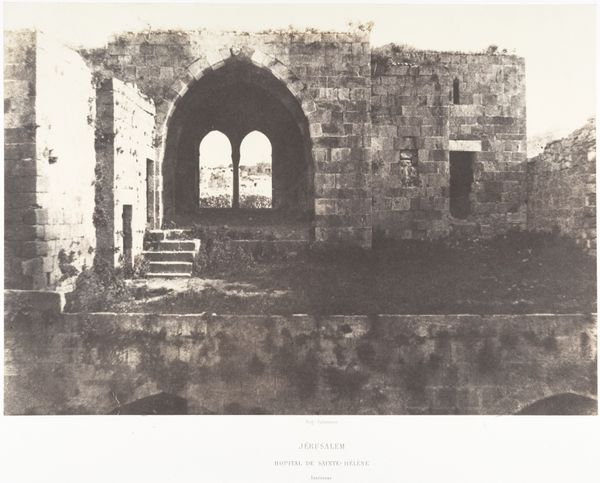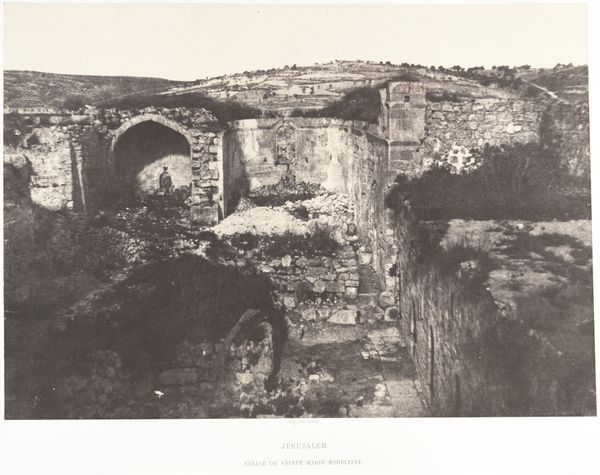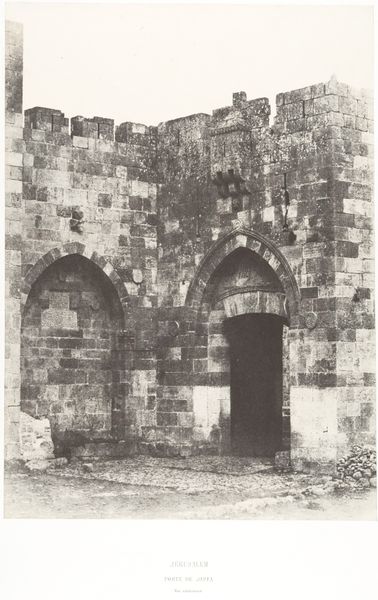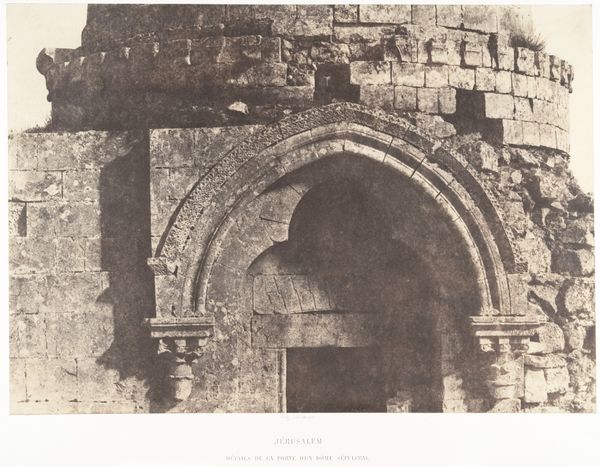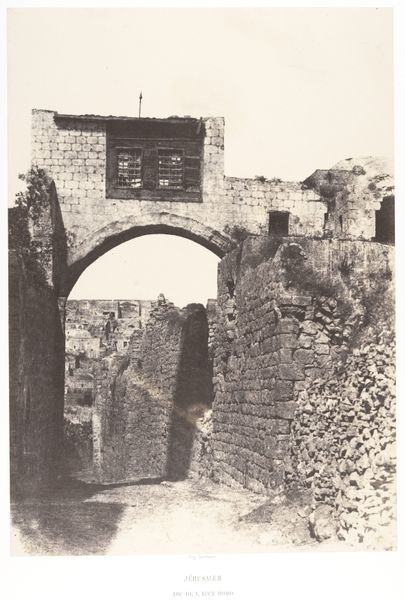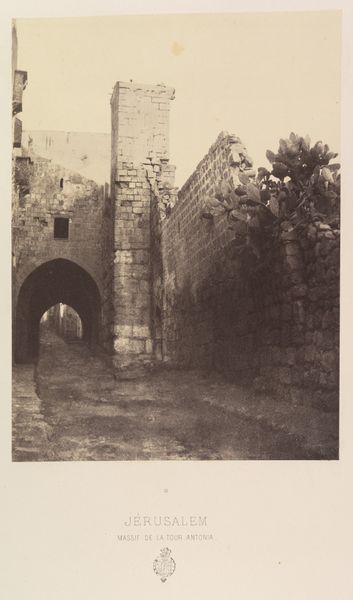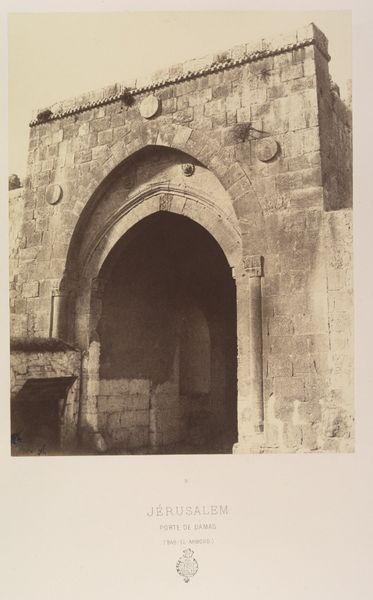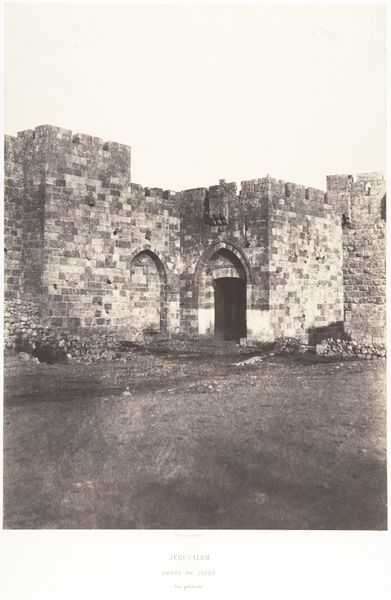
Jérusalem, Porte Saint-Étienne, Intérieur 1854 - 1859
0:00
0:00
print, photography, gelatin-silver-print, architecture
# print
#
landscape
#
photography
#
ancient-mediterranean
#
gelatin-silver-print
#
monochrome photography
#
architecture
#
monochrome
Dimensions: Image: 23 x 32.7 cm (9 1/16 x 12 7/8 in.) Mount: 45 x 59.8 cm (17 11/16 x 23 9/16 in.)
Copyright: Public Domain
Curator: Here we have Auguste Salzmann’s gelatin-silver print, “Jerusalem, Porte Saint-Étienne, Intérieur,” created between 1854 and 1859. Editor: It’s undeniably haunting. The stark contrasts in monochrome draw you into that central archway. There's a real sense of depth and weight in those stones. Curator: Absolutely. Beyond the visual impact, this image is charged with socio-political history. Salzmann's expedition to Jerusalem was partly driven by the belief that photography could provide "objective" proof to support biblical narratives and challenge prevailing understandings of the region. Editor: I can appreciate the pursuit of verifiable evidence. But it also reduces the site to a set of geometric components, planes of light and shadow. How do we read those formal elements? The arch, repeated, suggests structure, containment… a gateway. Curator: I read the repetition and stark contrast as reinforcing an othering, a framing that imposed a European gaze upon the “Orient,” to support colonial projects of power and control. The quest for supposed authenticity often camouflaged inherent biases. Editor: Do you see an inherent problem, then, in applying the documentary properties of photography to this subject? Curator: Not inherently, but it does call for critical engagement. We must confront the historical context: French colonialism, orientalism, the archaeological missions driven by Western interests. Consider, whose stories were not told because of this photographic focus? Editor: An important consideration. Thinking again of form, note the limited tonal range – dusty mid-tones seem to coalesce the architectural details of the walls and doorways. A kind of blurring of discrete identities. Perhaps Salzmann did inadvertently subvert a rigid structure? Curator: It’s a valuable insight – those mid-tones blur binaries. Salzmann's photograph, intentionally or not, becomes a palimpsest of ideologies, biases and potentially also reveals something more ambivalent beneath the surface. Editor: So, it's not just about what's depicted, but the historical layers the image accrues? Very thought provoking. Curator: Precisely, the past remains present in the aesthetic choices before us.
Comments
No comments
Be the first to comment and join the conversation on the ultimate creative platform.
